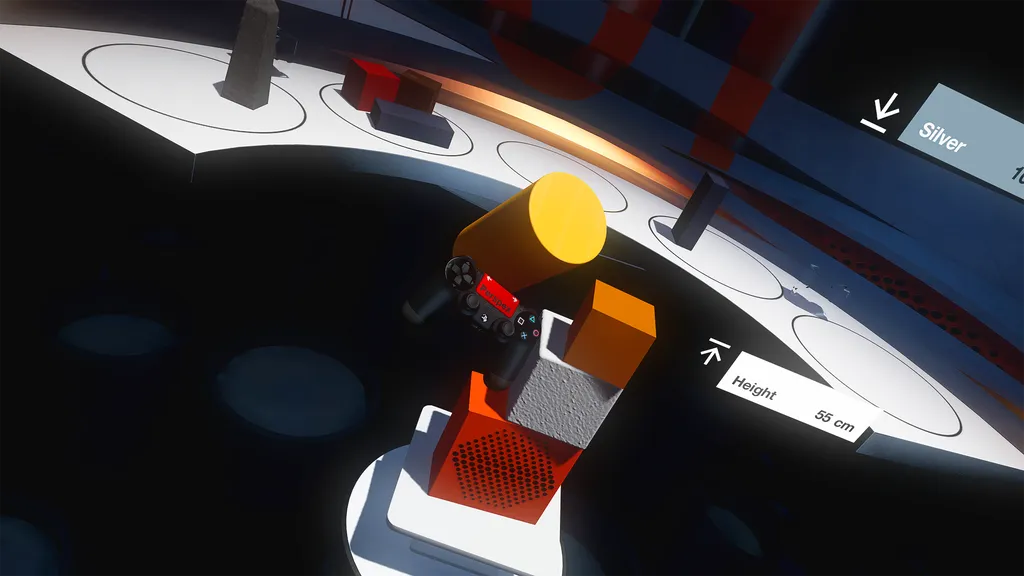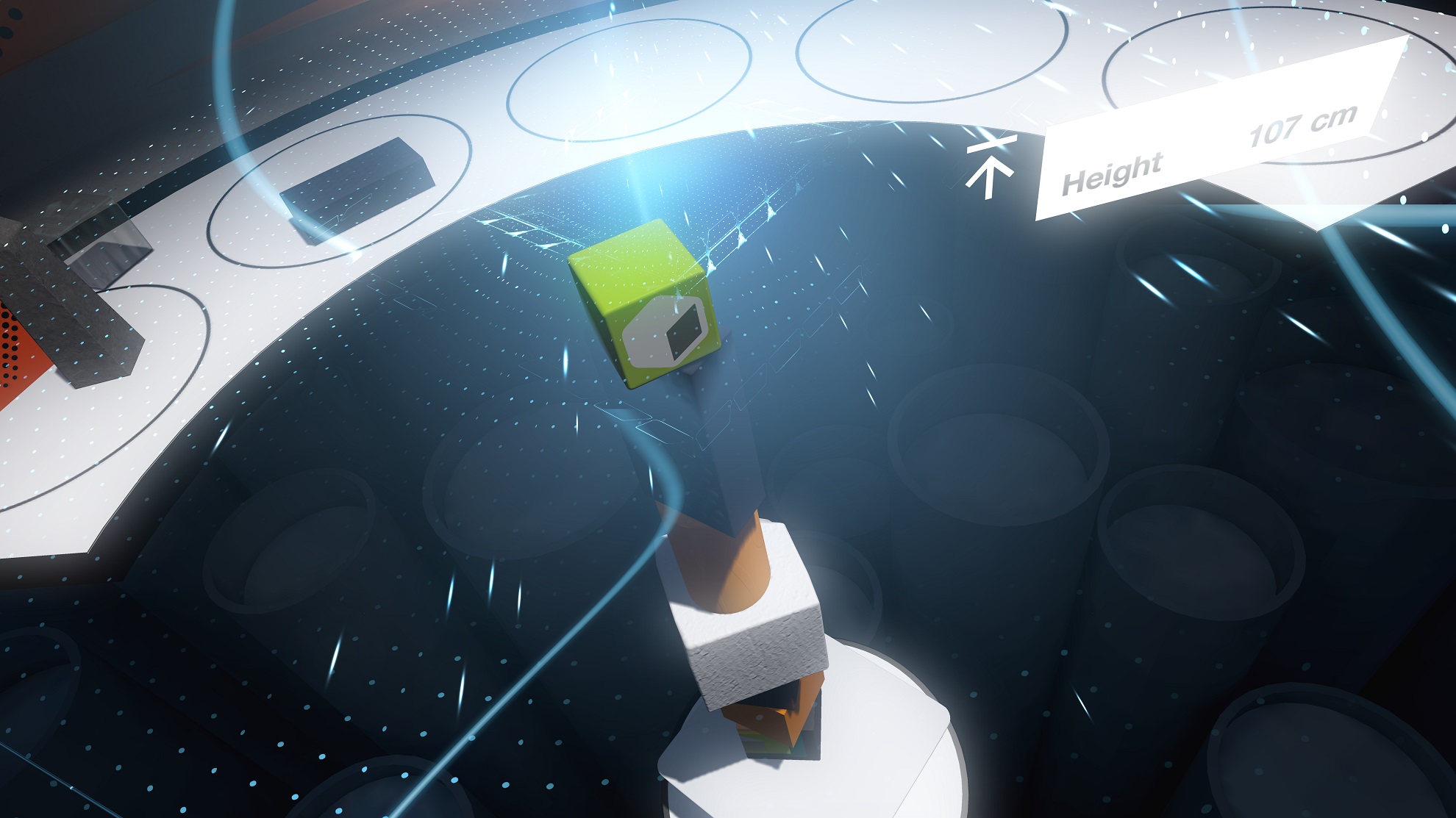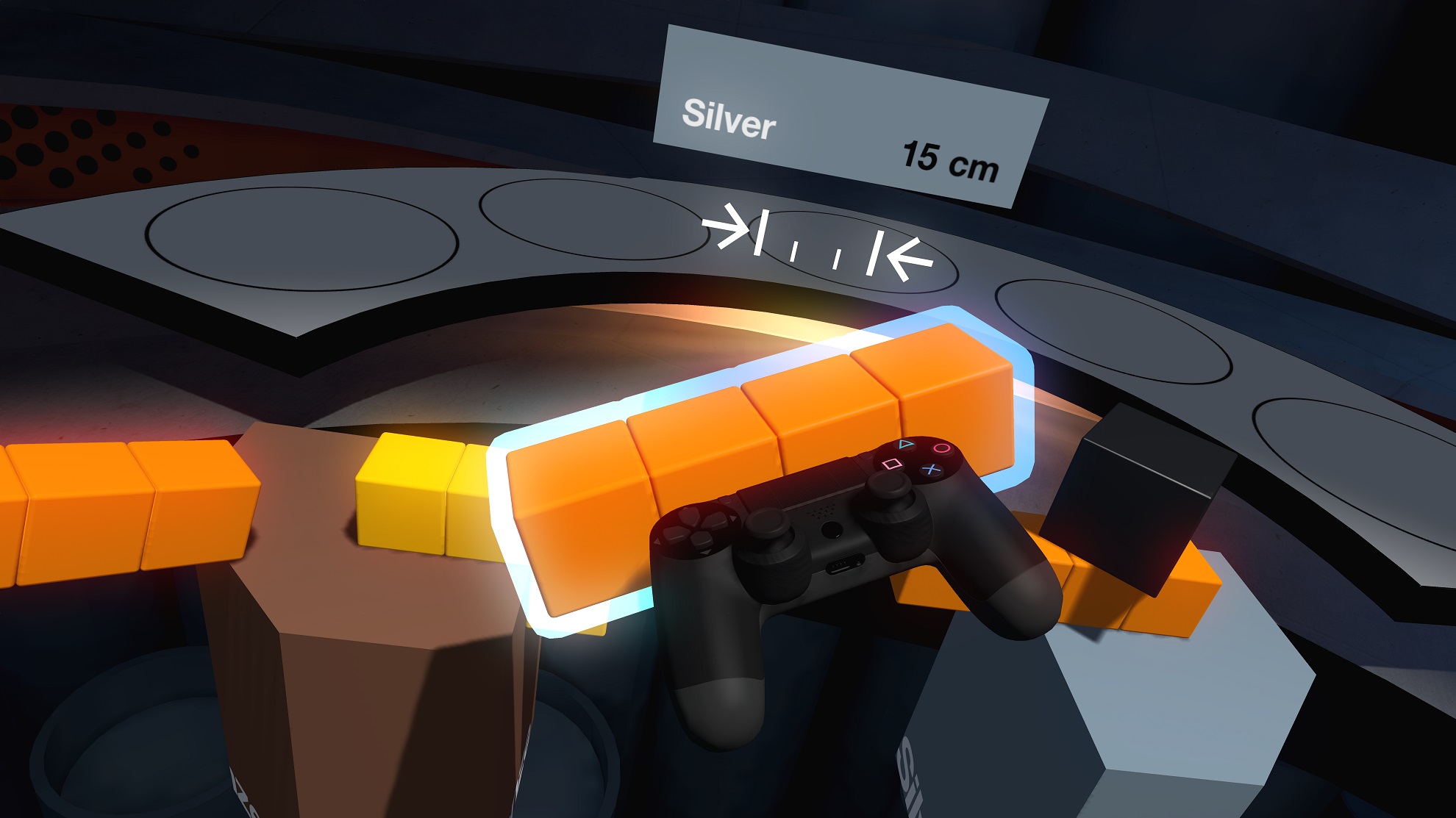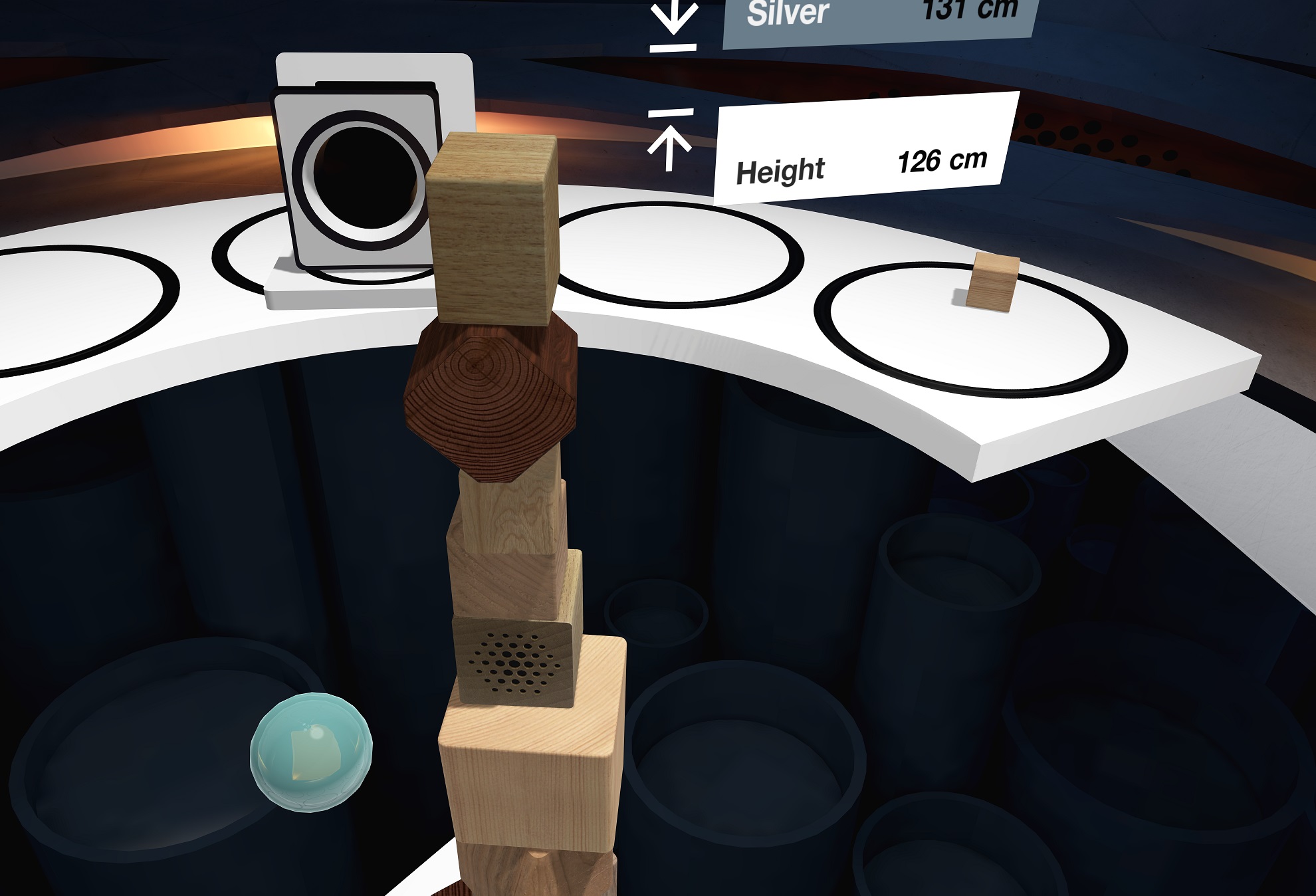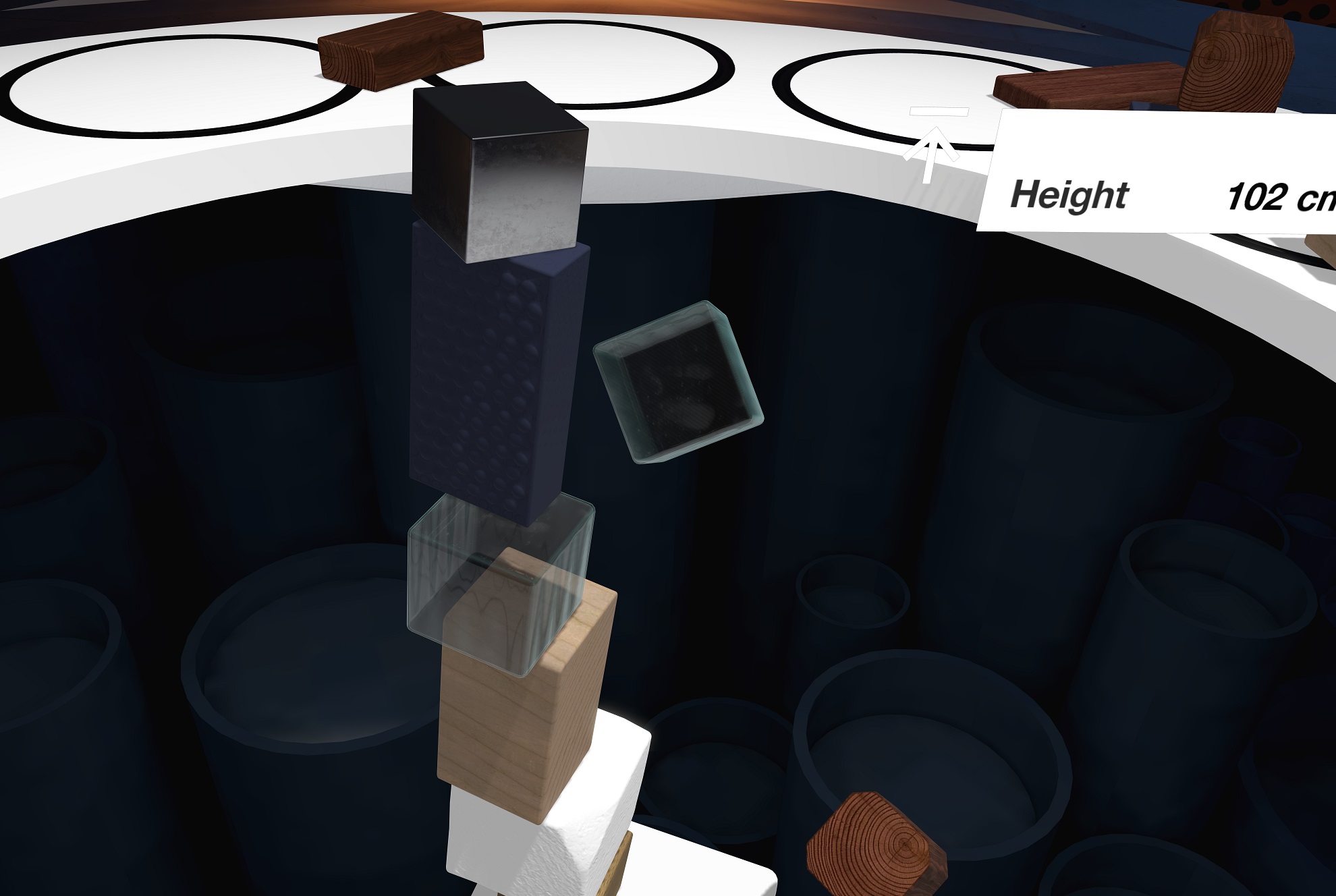I have three shapes in front of me: a small blue pyramid, a slightly larger S-shaped brown piece, and an even larger yellow cheese-wedge-like item. A floating metallic sphere called the “Test Supervisor Drone” snarkily states, “This puzzle is extremely simple. It is only intended to make sure that you understand what puzzles are.” I have to stack these odd shapes in a way that reaches a height of 51 cm. And so the permutations of configurations of these objects start running through my head.
The game is called Tumble VR, from Supermassive Games, the developers best known for their horror title Until Dawn and its VR cousin, Until Dawn: Rush of Blood. It is focused on the physics of objects, stacking them ever higher. But the game does not make things that simple. Every object, besides having a shape and size, which influences how you grab and place them on the platform, is also made of a specific material that has a corresponding weight and friction to its surface. Stone is heavy and rough. Rubber is light and rough. Wood has a medium weight, but a smooth surface. And then there is glass, foam, plastic, etc.
The goal of stacking is to go as high as possible. But then you get other levels that change the goal, such as the aforementioned puzzle level where you have to get to a certain height with only 3 objects. Then there are destruction levels where you blow a stack, by placing mines and then setting them off, trying to send the blocks flying as far as possible. There are limbo levels with moving bars of different orientations and shapes where the goal is getting a certain of number of objects on the platform without them being knocked off from the limbo rod.
There are even puzzles in Tumble VR where you move objects that affect a laser, seeking a way to get the laser to go to a certain place. Then more esoteric goals come: build a bridge between two platforms, build a stack on a platform with a slanted bottom, destroy a stack in a way where the top piece flies over a wall. You get the point.
And these levels aren’t just about reaching the goal. There is usually goals. Plural. You get a bronze medal for getting a stack to say 40cm and then silver for 70cm and then gold for 100cm. And the objectives don’t stop after that. After you finish the level once, it will unlock additional objectives for more medals: get a Time medal for completing the puzzle quickly, or a Target medal for somehow putting a shape in a specific space above the platform. There are even hidden blocks with hidden medals.
So you are using your Dualshock 4 or Move controllers to carefully arrange items of all kinds. And you are earning all these medals. These medals unlock new zones with even more levels (with even more objectives and medals and more zones to unlock). There are 50+ levels with hundreds of objectives. It is a great variety of gameplay from such a simple concept. And if you get sick of one kind of level, skip it and just do another kind. After all, you may have accumulated enough medals in Zone 3 to unlock Zone 4 without playing Level 19.
Since you can play with either the Dual Shock controller or the Move, both methods are valid and both methods use the camera to track motion. With the Move, you have a virtual Move that you point at an item, highlighting it. You simply pull the trigger to grab an item. You twist the object in your hand to get it just right, moving around the platform to place it where you want.
With the Dualshock, you see a virtual controller and a beam of light coming out of it. You point that light and grab objects. You can then use the Right Analog to rotate and flip the item, and the Left Analog to rotate or change the height of the platform. Both methods show the material and the weight of the object on the virtual controller. I personally enjoyed playing with the Dual Shock more, because rotating the object in 90-degree increments felt like I had more precise control over it.
Beyond moving objects around in all of these levels of the single player campaign, there is a Versus mode in Tumble VR too. The player in the VR headset has to stack items, getting to a certain height by a certain time limit, say two minutes. The opponent looks at the television and controls a drone with a Dualshock. They can grab different machines and use them to influence the stack that is being built. Position a fan to blow off lighter items like foam, aim a catapult to pummel a wood block, or a blaster to shoot objects and destroy them.
As you beat certain levels in the single player campaign, you unlock additional levels in the versus mode. This game type provides even more value to an already sizeable puzzle game that will have you twisting and reaching. It’s almost like having two separate but similar games in one package.

